Cordoba, Argentina
Cordoba is the second-largest city in Argentina, known for its historic university. As a major city, it also attracted a sizeable Lithuanian community before World War 2. This community has established two Lithuanian clubs, however, they have since folded, making Cordoba the only conurbation in Argentina to have lost its Lithuanian clubs. The buildings of the clubs survive to this day.
The older Lithuanian club had been called Neptūnas after the Lithuanian name of the Ancient Greek god of the sea. Established in 1928 during the wave of Lithuanian immigration, it built its current building at Charcas street in 1938. As the years passed and generations changed, however, the Lithuanian activities declined. In the early 1980s the building of „Neptūnas“ was illegally occupied by squatters. Under the Argentinian law, such squatters may gain legal title to the building if they use it long enough, eventually taking the possession of Neptūnas building. While Lithuanian signs were removed, the facade inscription „Sociedad Lituana Neptūnas“ is still somewhat legible on the building.
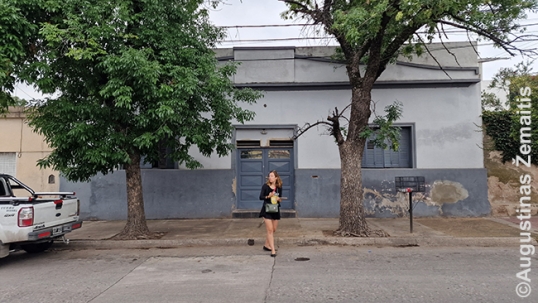
Neptūnas building
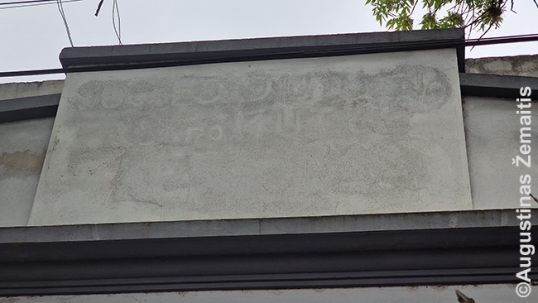
Still-visible name of Neptūnas on the building
„Neptūnas“ was associated with far-left political beliefs. This became especially controversial after Lithuania was occupied by the Soviet Union in 1940. The Soviet occupation and genocide in Lithuania made significant numbers of Lithuanians to abandon „Neptūnas“. They founded the second Lithuanian club of Cordoba as the World War 2 ended in 1945. This was the Sixth section of the Lithuanian Alliance in Argentina (Susivienijimas). It was associated with the Lithuanian Alliance in Argentina (Susvienijimas), an organization that has its HQ in Lanus near Buenos Aires
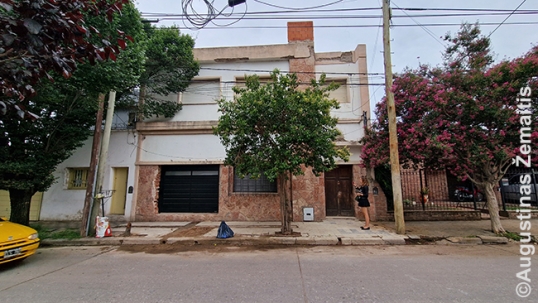
Lithuanian Alliance Sixth Section building
While Lithuanian activities were still strong in Cordoba, one rather long street has been renamed Lituania after the country. A metal commemorative plaque located next to the intersection of Lituania and Patria streets tells the story that the street was so named in 1969, the 50th year since Lithuania became independent from the Russian Empire (1918) albeit by this time Lithuania was once-again occupied (by the Soviet Union). This only made the independence anniversary more important for Lithuanian-Argentines, however, as they sought to remind the world that Lithuania was an illegally-occupied free nation.
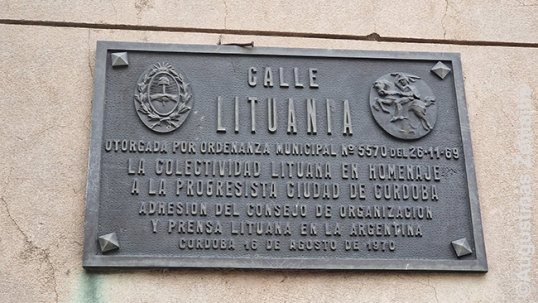
Calle Lituania sign in Cordoba
Cordoba never had a Lithuanian church, however, a Chicago-based order of St. Casimir Lithuanian nuns had a presence in Cordoba. These nuns would teach Lithuanian language even after the Lithuanian clubs folded. They had their convent and chapel at the location of current Sanatorio Allende. However, as their numbers dwindled, they sold the convent building and it has been demolished since.
While there are no exact numbers of how many Lithuanians arrived to Cordoba, local Lithuanians assume there were about 200 families, of which 80 went to „Neptūnas“ and 80 to the Susivienijimas, with some 40 not participating in the Lithuanian activities altogether.
Cordoba regon Lithuanians have been replenished by migration of Lithuanian-Argentines from elsehwere, especially Buenos Aires. One such family, the Kekutts, have established hotel „Anita“ in Villa Giardino town near Cordoba back in 1942, some 12-14 years after they immigrated to Argentina. The hotel was named after the wife of its owner Miguel Kekutt whose name was Ona. It operates to this day owned by the same family, with many of the authentic 1942 furniture and the images of builders of the hotel still inside.

Hospedaje Anita in Villa Giardino




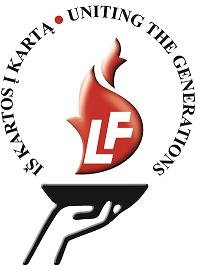

February 10th, 2024 - 19:17
It was amazing to have you in our home, to learn more about the place of our ancestors.
Thank you for listening, reading and telling us lots of new things, we learned a lot.
Hugs from the Kekutts, both are welcome at anytime. See you soon!
March 3rd, 2024 - 12:44
Thank you!